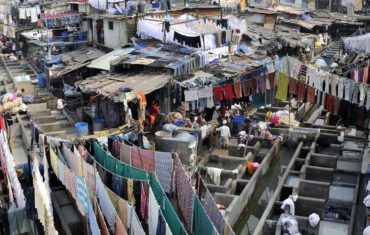Dharavi is a locality in Mumbai, Maharashtra, India. This slum is the second largest in Asia, after Orangi (in Pakistan [1]). Dharavi has an area of just over 2.1 square kilometres (0.81 sq mi; 520 acres).[2] Dharavi’s population is about 700,000 (compared to 1.5 million in Orangi) and a population density ofover 277,136/km2 (717,780/sq mi), Dharavi is one of the densest areas in the world. The Dharavi slum was founded in 1883 during the British colonial era, and grew in part because of an expulsion of factories and residents from the peninsular city centre by the colonial government, and from the migration of poor rural Indians into urban Mumbai (then called Bombay).
For this reason, Dharavi is currently a highly multi-religious, multi-ethnic, and diverse settlement. Dharavi has an active informal economy in which numerous household enterprises employ many of the slum residents– leather, textiles and pottery products are among the goods made inside Dharavi. The total annual turnover has been estimated at over US$1 billion. Dharavi has suffered from many epidemics and other disasters, including a widespread plague in 1896 which killed over half of the population of Mumbai.



